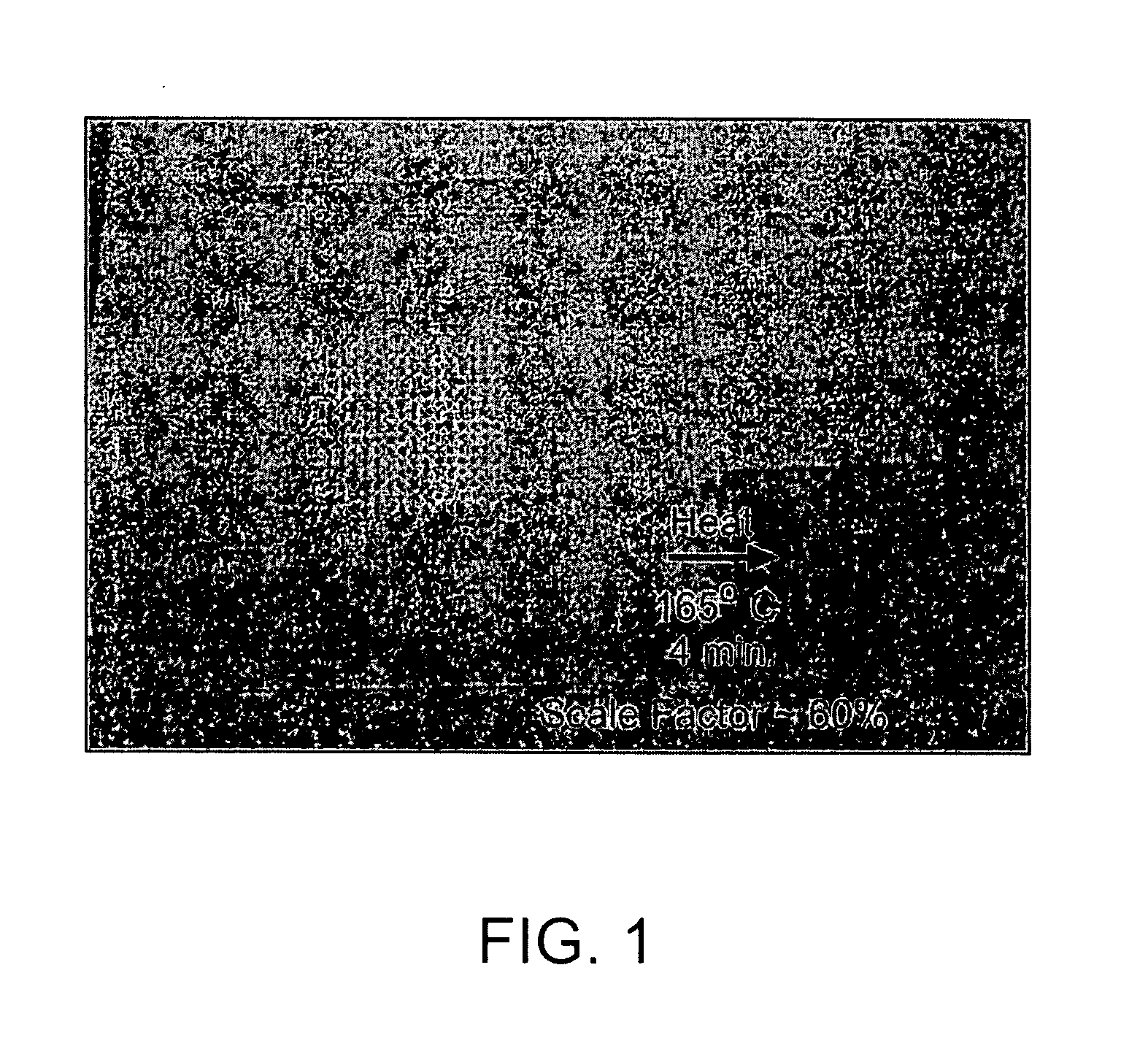Apparatus and method for culturing stem cells
a technology of stem cells and apparatus, applied in the field of apparatus and method for culturing stem cells, can solve the problems of manual labor and manual approach, and achieve the effects of simple, rapid, and scalable culture, and significant stem cell differentiation effects
- Summary
- Abstract
- Description
- Claims
- Application Information
AI Technical Summary
Benefits of technology
Problems solved by technology
Method used
Image
Examples
example 1
[0089]The microwells can be designed in AutoCad 2002 (AutoDesk, San Rafael, Calif.). Using a Hewlett-Packard LaserJet 2200D, designs are printed onto the polystyrene thermoplastic sheets (Shrinky Dinks, K & B Innovations, North Lake, Wis.) that resemble transparencies. These thermoplastic sheets are then fed through the printer several times for additional height and / or multi-dimensional wells. Printers can be set to either 600 dpi or 1200 dpi. Counter-intuitively, at 600 dpi, smoother feature edges were achieved, at the expense of height. The transparency setting was used for the printer. For multi-layered printing, alignment was ensured by adjusting the printer paper tray such that it tightly fit the thermoplastic sheet. Various printers have been tried, including a HP Color LaserJet 2600n and a Samsung ML-2510. The primary difference between the various printers was a slight variation in ink height.
[0090]The printed polystyrene sheet is placed in an oven for about 3-5 minutes at ...
example 2
[0096]The method of this invention is illustrated by creating embryoid bodies using a red fluorescent mouse cell line (129S6B6-F1). A video demonstration of the process is available on the Journal of Visualized Experiments, available at the web site jove.com / index / details.stp?ID=692, first published on line on Mar. 9, 2008.
[0097]A desired pattern on shrinky-dink sheet was made using a good definition printer. The shrinky-dink was heated at 163° C. for about 10 minutes, or until fully shrunk and having acquired a regular shape. After shrinky-dink mold has cooled down, it was submerged it in an isopropanol bath until the complete surface is barely covered.
[0098]Some acetone was carefully sprayed over the mold and the container was shaken for a few times. More isopropanol was added to wash out acetone excess and this step was repeated a few times until the shrinky-mold looked clean. The mold was then immersed in distilled water for 10 minutes to wash off any remaining organic solvent. ...
PUM
| Property | Measurement | Unit |
|---|---|---|
| diameter | aaaaa | aaaaa |
| diameter | aaaaa | aaaaa |
| diameter | aaaaa | aaaaa |
Abstract
Description
Claims
Application Information
 Login to View More
Login to View More - R&D
- Intellectual Property
- Life Sciences
- Materials
- Tech Scout
- Unparalleled Data Quality
- Higher Quality Content
- 60% Fewer Hallucinations
Browse by: Latest US Patents, China's latest patents, Technical Efficacy Thesaurus, Application Domain, Technology Topic, Popular Technical Reports.
© 2025 PatSnap. All rights reserved.Legal|Privacy policy|Modern Slavery Act Transparency Statement|Sitemap|About US| Contact US: help@patsnap.com



